In this issue:
My current success losing weight. Pain: the good & the bad. Stress eating and the power of self-compassion. Got (the right) milk? L-cysteine: An alternative to NAC? Gym-xiety. Striding along. IT pro toolbox.

No, that wasn’t me. But it could easily have been. Photo by AllGo – An App For Plus Size People on Unsplash
Editor’s Corner
Hey everyone! Welcome to the October 2021 issue of FitITproNews, the world’s only newsletter devoted to helping “recovering fat IT pros” make progress on the journey towards strength and health!
Here’s a quick rundown of what you’ll find in this month’s newsletter:
- My current success losing weight (Mitch Tulloch)
- Pain: the good & the bad (Robin Camp)
- Stress eating and the power of self-compassion (Lana Khazari)
- Got (the right) milk? (Kris Lall)
- L-cysteine: An alternative to NAC? (Sarah Trammell)
- Gym-xiety (Kris Kane)
- Striding along (Judith Shipps)
Enjoy this month’s issue of FitITproNews and feel free to send us feedback on any of the topics we’ve covered — we love hearing from our readers!
Cheers!
Mitch Tulloch, Senior Editor
My current success losing weight (Mitch Tulloch)

Mitch Tulloch is the Senior Editor of FitITproNews and a recovering fat IT pro who lost 50 lbs in midlife and is now on his way to becoming a fit IT pro. Mitch is a widely recognized expert on Windows Server and cloud technologies who has authored or been Series Editor of numerous books/ebooks from Microsoft Press. Mitch is also the Senior Editor of WServerNews and writes frequently for TechGenix.
Losing weight is hard, but keeping it off can be even harder. After losing almost 50 lbs ten years ago and probably saving (or at least extending) my life, my weight has generally tended to go up and down instead of staying steady. For example in spring 2018 my weight had risen to 230 lbs mostly because my eating habits had gotten out of control—a common occurrence with us in IT because the high levels of stress associated with our profession. At that point my knees started to hurt so I decided to try and do something about it. Over the next six months by careful dieting and vigorous exercise routine (Tabata 3x per week) I managed to get my weight back down to 203 lbs. But then I slackened off and gained back 20 lbs during the year that followed. So I got serious again with HIIT workouts and caloric restrictions, and forced myself back down to 205 lbs in four months. Once again however, the twin stresses of work and life conspired to upset my carefully arranged applecart and my weight began slowly rising again: 207, 210, 213…
Then in late fall of 2019 while I was cleaning up our yard I came down with an awful case of poison ivy that required my going on extended Prednisone treatment. Frustrated and itching like mad, I retreated to my favorite medicines for relieving stress: potato chips, ice cream, and booze (and Jack Reacher novels). Boom, ten pounds gained in only two weeks.
Then COVID arrived, and lockdowns, and working from home, and lots more stress. I tried eating less and exercising more, but my weight continued to increase instead of decline. By early February of this year I was 232 lbs again and had trouble walking up and down our stairs. I realized then that I needed to try a whole new approach to losing weight—and to keeping it off. It was at this point that I re-read the article by Dr. Layne Norton that I mentioned in last month’s newsletter whereupon this statement by him made a deep impression on me: “Whatever strategy you pick for nutrition, make sure that it’s something that you can see yourself doing for YEARS.”
I said OK, what kind of eating/exercising lifestyle can I adopt that I can sustain indefinitely? Giving this some hard thinking I came to the following conclusions:
- Moderate, occasional exercise will be more sustainable for me than frequent, intense workouts.
- A balanced diet with a variety of different foods will be more sustainable for me than trying to limit carbs or load up on protein.
After all, I’m not a fitness model or bodybuilder or a personal trainer, I’m just a fat IT pro trying to get fit enough to fit my jeans!
Anyways, with those two changes in mind, I slowly started varying my workout routines and broadening the boundaries of my eating habits. The result after almost nine months is shown in the following graph:
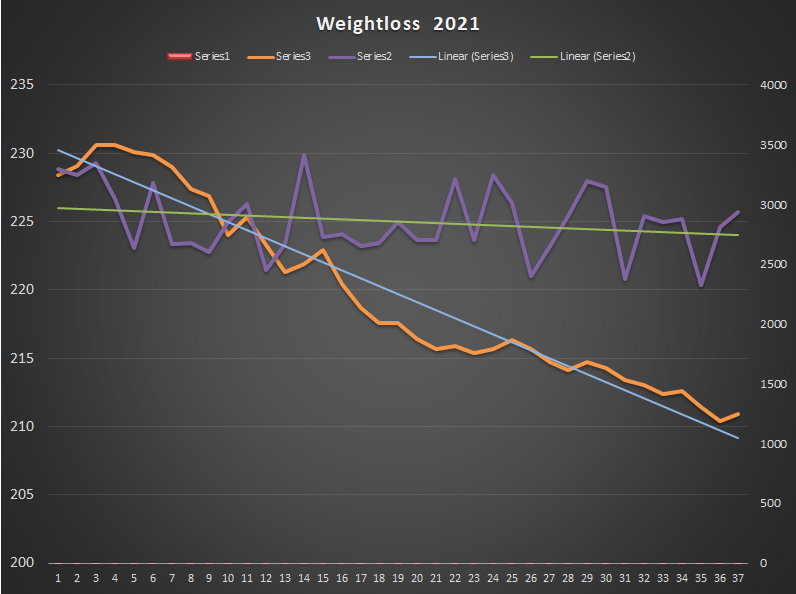
My weight as shown in orange has declined from a peak of 232 lbs to 211 lbs as of today. Those 21 lbs have taken a long time to melt away, and as you can see my rate of progress has varied. But the downward trend continues steadily as indicated by the light blue trend line.
More interesting however is my average daily caloric consumption as illustrated by in purple in the above graph. Once again you can see that I my eating habits tend to fluctuate but mostly stays within a range of 2500 to 3000 calories per day. A close-up look at the second half of this time period is even more fascinating:
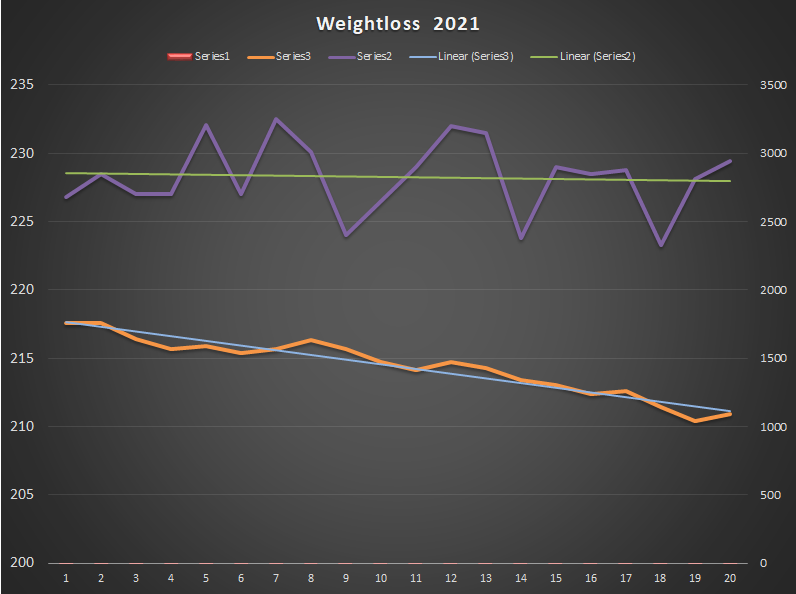
You can see from the above that during the last four or so months my daily caloric consumption has remained fairly steady around 2800 cals/day while my weight has steadily declined by about 6 lbs. What *really* encourages me about this is that I appear to have found an eating and exercise lifestyle that I’m happy with, one where I rarely feel hungry and can eat almost anything I want—and yet steadily lose weight!
I’ll provide more details of my newfound sustainable diet in next month’s newsletter.
–Mitch
Pain: the good & the bad (Robin Camp)
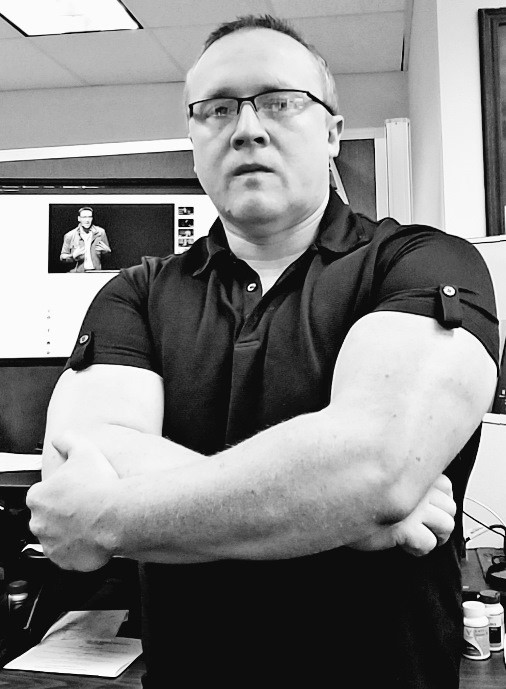
Robin Camp works as tech support for an Orthodontic Practice Management Software company called New Horizons Software ( www.nhsoftware.com). As a professional photographer on the side, Robin does fashion, glamour weddings and more in his spare time (www.dancingwithlightphoto.com). You can also now find him working out on Instagram at https://www.instagram.com/fitittech/.
There are very few phrases that have so many truths and so many lies in them, as the trite “No Pain, No Gain”
Muscle soreness is a type of pain, and it is going to be necessary to have some soreness to make progress. Muscle growth is the result of micro tears in the muscle and the body repairing those tears. Overtime, this will lead to stronger muscles. Working through this type of pain WITHIN reason will help you with your gains, but as with everything it can be overdone and detrimental to your progress and or health.
Listen to your body, occasionally it needs rest. You don’t have to stop working out, just listen to your body. If you are constantly exhausted, not making progress and always sore, you are most likely over training. Back off the intensity, give your body enough of a break to recover before putting the pedal back to the floor. Also, please remember that if you are not eating enough nutrients for your body to repair the damage you are doing to it with each workout, you are sabotaging yourself. Even if you are focused on losing weight, your body needs nutrients to repair itself.
Joint pains, tingling nerves/shooting pains, a non-muscular pain in your chest? Stop. These are not the types of pain you want to “push through”.
Joint pains can be anything from your body’s less than subtle queue that your form is off to a damaged ligament, tendon or worse. If you are experiencing joint pain, strip ALL the weight off the bar and carefully evaluate your form, if you cannot find a comfortable way to do the exercise, stop and see a sports doctor or your doctor. Joints do not repair themselves the way muscles do and screwing up a joint can lead to unwanted surgery.
Tingling nerves, are another warning sign from your body, it can be simple inflammation pushing on a nerve, a herniated disc or heart problems. Again, listen to your body, check your respiration rate and heart rate. Tingling nerves are not something to ignore, check with a sports doctor or your own physician.
Heart pain, FULL STOP. Know the symptoms and your risk of heart problems. Monitor your heart rate and consult with your sports doctor, physician if you have any concerns. Also, know where the portable defibrillator (AED) is located in your gym and find out when it was last inspected/charged. By recognizing the warning signs you can also look out for your fellow gym members.
Please note, exercise is not inherently dangerous, but you need to know the risks and take care of yourself to ensure maximum health and enjoyment.
Have fun and be safe!
“Why do we fall? So we can learn to pick ourselves up.”
~Alfred Pennyworth~
Stress eating and the power of self-compassion (Lana Khazari)

Lana Khazari is a Technical Support Analyst for the Corporation of City of Windsor, Ontario, Canada. She is also a Precision Nutrition Coach, Personal Trainer, Fitness Instructor and a Yoga 200-RYT Instructor. You can find her online at lanakharazi.com.
We are 18 months into a pandemic, and nothing is normal. It should only make sense that you are not doing what you would normally do – eat, exercise, work, live – it may all be different. A change in routine can bring out bad feelings and stress eating. Bad feelings can cause more bad feelings. It’s a vicious cycle. A different approach to take is a self-compassionate one.
At first, this may sound weak or an excuse to be lazy. But that’s fear talking. Some can be afraid that if we are nicer to ourselves, we will continue to be unmotivated. That to take action, we need to be harder on ourselves.
Instead, we can choose to accept ourselves and all our glorious imperfections. We remind ourselves that we are good enough just as we are now. Self-compassion does not mean that we don’t have to change our unhealthy habits or reach our goals. We can be both tender and fierce.
To help understand this better:
- Self-compassion is not giving yourself a permanent free pass
It’s giving yourself a break. It’s acknowledging that life can be challenging without ruminating or beating ourselves up for what we did or for what happened. It’s also not being an Eeyore and exaggerating our struggles or throwing a pity party. It’s being our own best friend and supporting ourselves the way we would do for others. Instead of being harsh and critical when we mess up, it’s supportive and encouraging. Do you ever catch yourself in negative self-talk like “When will I ever learn?”, “I can’t stop myself, I’m terrible,” or “I did it again, I’ll never change!”. There is evidence that negative self-talk releases dopamine. Dopamine is a hormone involved in the addiction pathway that strengthens the cycle of negative self-talk, stress eating, and bad feelings. It can feel like an endless loop. Giving yourself a self-compassion break can interrupt that cycle, knowing that you do not have to be tough and strong to get through it. Instead, self-compassion develops inner strength and resilience in the face of difficulties. So when life presents challenges, be kind to yourself; this is the first element of self-compassion. It does not make you a wimp.
- Self-compassion does not mean ignoring all your problems
It means facing your problems and actively looking for solutions. The second element of self-compassion is common humanity. We can recognize that we are all a work-in-progress and that we all make mistakes. It’s acknowledging that in life, we suffer without exception. That someone out there has gone through what you are going through right now. We sometimes get stuck in faulty thinking that everything is supposed to go perfectly well. Instead, expect that you will make mistakes and experience hardships regularly. It is easier to move forward when you acknowledge that we are all human and we can all struggle. For example, you may have eaten way too much over the holidays. Instead of a “screw it” attitude that turns into a free-for-all all, acknowledge that we can all overdo it from time to time and be mindful of how normal that is. It will be more likely that you will get back to healthier behaviors when you support yourself this way.
- Self-compassion does not mean letting yourself off the hook.
It’s about being more aware of what you are doing, thinking, and feeling. It’s awareness of the moment-to-moment experiences in a more balanced manner without resistance, judgment, or avoidance. Mindfulness is another essential element of self-compassion. Mindfulness helps to acknowledge the suffering long enough to respond with care and kindness. Without it, we often don’t stop long enough to notice that we are in pain. By acknowledging painful thoughts and emotions, we can uncover the truth in that experience. Suppose we can be honest with ourselves. In that case, we can be wiser and more objective about ourselves and our lives instead of emotionally reactive. When we are less emotionally reactive, we can decide to do something different when facing that problem or situation again. Mindfulness is our first step to responding in a new way.
So next time you catch yourself stress eating, try being nicer to yourself. There’s actual research on self-compassion and its ability to help reduce the “screw it” feeling. Using the three elements; Mindfulness, Common Humanity, and Self-kindness, you can prevent yourself from giving yourself that free pass.
Here is an example of the three elements at work:
Mindfulness: “I’m so anxious. It is 3 pm, and I have not gotten all my work tasks completed yet. Those chips are calling my name.”
Common humanity: “There are many people who reach for food when stressed. Also, I may not have gotten everything done that I wanted to do, but many people could not live up to these expectations.”
Self-kindness: “Take a breath and focus on the next thing I need to do. If I eat the chips or not, this feeling will pass.”
Self-compassion is both having an honest and kind attitude. To acknowledge that it’s normal to have bad feelings. It is not a form of self-pity; it does not mean you are weak, complacent, or selfish. And it’s never an excuse to stress-eat. Self-compassion helps remove some of the guilt and understand that it’s normal to reach for food when you have heavy feelings.
Applying this technique may feel uncomfortable to try at first if you are more comfortable using food to bury or avoid feelings. Suppressing emotions only strengthens the negative feedback loop. So we continue to use food to try to make ourselves feel better, but it never does. Self-compassion can help to break that cycle and provide some relief. It may not be the easiest path, but it may be one that actually works for you
Got (the right) milk? (Kris Lall)

Kris Lall works as a product manager in the tech industry for an enterprise software manufacturer. As a youngster, Kris was consumed with soccer before technology came along. Now he’s consumed with both. You can find him on Twitter at the not-too-surprising handle @krisoccer.
I’ve always been an avid milk drinker. It goes with so many of my (your?) favorite foods and beverages – coffee, tea, cereal, chocolate chip cookies, and so on. Milk goes with just about everything!
Cow’s milk does have its downsides, as it contains a sugar called lactose, and lactose intolerance is one of the more pervasive health issues in our society today. If you’ve stopped drinking milk or avoid foods with dairy altogether because of how it makes you feel after ingesting, then you could be intolerant to lactose, like a lot of people. In fact, statistics show that about 36% of the U.S. population are lactose intolerant.
Having had my fair share of digestion issues, I’m keenly interested in the impact of dairy on my internal food processing system. According to several medical sources, typical symptoms of intolerance include nausea, cramps, gas, bloating, and/or diarrhea within 30 minutes to two hours after consuming products with dairy.
When I was youngster, our milk options were whole (4%), 2%, 1%, and non-fat cow’s milk, and then “dry”. Some may recall adding water to milk powder for a somewhat less than fulfilling milk experience. I haven’t heard a peep about powdered milk since I drank my first (and last) cup of it several years ago, but it is still available and about as nutritious as regular milk.
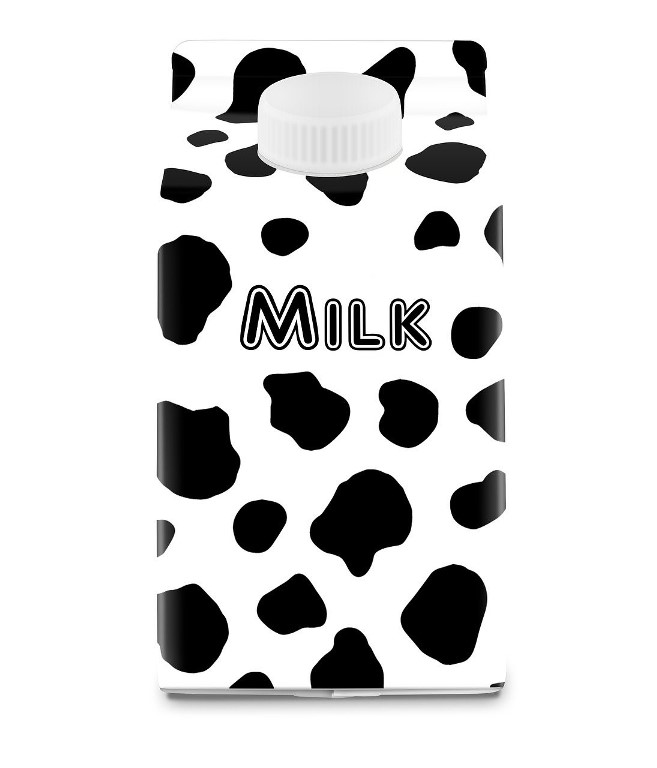
Find the milk type that does your body good! Credit: Creative Commons
The good news is that all of us “intolerant” people have more milk substitute options than ever, and I’ve noticed several of these showing up in the family fridge lately, including coconut and oatmeal milk. Other milk types now available on the market include soy, rice, almond, and even hemp. Which one is right for you?
As I researched this article, hemp milk actually showed up at the top of some milk lists as the most nutritional. Those hemp/marijuana plants just keep on giving! And, no, hemp milk doesn’t have any psychoactive effects.
I’ve also recently tried both coconut milk and oatmeal milk. Coconut milk is made up of coconut flesh mixed with water and is a good source of many vitamins and minerals. Oatmeal milk is basically water added to oats and then strained, and seems to be the closest replacement to the experience I’ve become accustomed to with cow’s milk. I plan to try other milk types.
If you’re not a milk drinker, good on ya! There’s probably no harm in being intolerant of drinking milk of any type, as long as you’re getting nutrition in other ways. If you are a milk drinker and suspect that you may be physiologically intolerant, then it may be time to go cold turkey on cow’s milk and consider the wide range of other milk options now available on the market. So if anybody asks if you “got milk”, your more informed response can include a range of milk options to cover every need.
References:
https://www.healthline.com/nutrition/healthiest-milk
https://www.insider.com/best-milk-to-drink-2018-9
https://www.webmd.com/allergies/milk-allergy
https://my.clevelandclinic.org/health/diseases/7317-lactose-intolerance
https://www.verywellmind.com/cbd-vs-thc-differences-benefits-side-effects-legality-5071416
L-cysteine: An alternative to NAC? (Sarah Trammell)
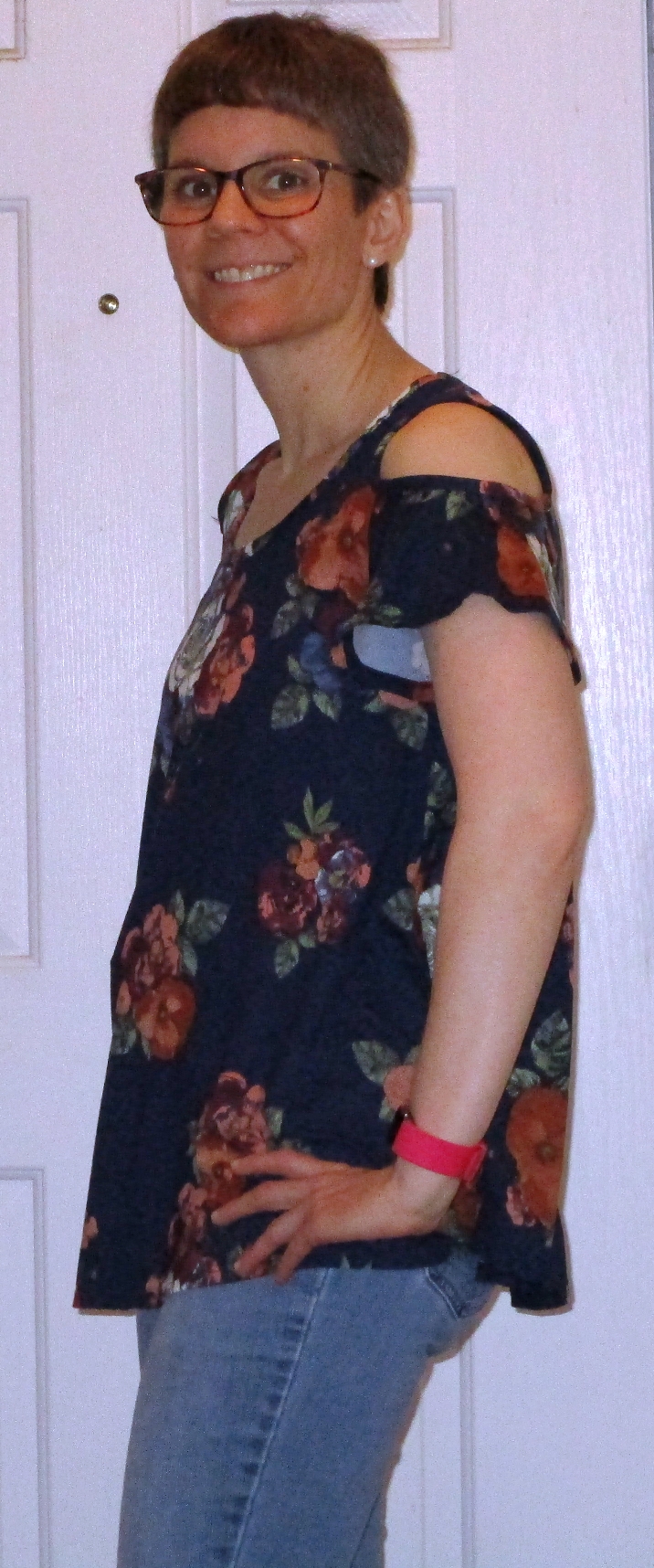
Sarah Trammell is an application analyst at a university in Georgia. She became interested in health and fitness issues when she began making diet and lifestyle changes to lose weight back in 2007 and learned even more when trying to track down what to do about other health issues beginning in 2011 with not much input from doctors. You may follow her blog at ihatemyglutenfreelife.com.
N-acetyl l-cysteine (or NAC for short) is a modified form of the amino acid cysteine. NAC was, and may still be in some cases, sold as a supplement, but the FDA considers it a drug and has claimed that it’s illegal to be sold as a supplement or as an ingredient in a supplement, https://medlineplus.gov/druginfo/natural/1018.html. L-cysteine is another type of cysteine supplement that has no controversy surrounding it and may be as effective as NAC. It has been an effective supplement for me. You can read more about my experience here, https://ihatemyglutenfreelife.com/uncovering-and-handling-glutamate-excess/.
I’d never heard of NAC until I began to look for supplements that would help me deal with the effects of my inner ear damage. The doctors were just not helping, so I decided to see what I could find out on my own. Through trial-and-error, I discovered that the inner ear damage was causing a stress response. There are two neurotransmitters whose balance can be altered by stress, glutamate and GABA. Stress causes increases in glutamate. When glutamate increases, the body should be able to compensate by increasing the production of GABA to maintain balance between the two. I came to the conclusion that the balance between these two neurotransmitters was not being maintained through one of the supplements that I’d tried. I felt worse after taking it, and I wondered as I researched it if the reason was that it was high in glutamine, the amino acid that is the precursor to glutamate. As I researched, I discovered that taking NAC would help to maintain the balance between glutamate and GABA. This page briefly mentions how NAC works in this regard, https://schoolafm.com/ws_clinical_know/insomnia-relief-for-night-time-racing-mind/. I was excited and began looking into more information about it and where I could get it. That’s when I found out that NAC being sold as a supplement has been challenged by the FDA because the FDA claims it’s actually a drug. I also found out that cysteine can be bought in supplement form as l-cysteine. Because of the controversy surrounding NAC, I decided to try l-cysteine. Amazon sells a few brands of this supplement. This is the one I’m using currently, https://www.amazon.com/Solgar-L-Cysteine-500-Vegetable-Capsules/dp/B00014DR5U/. I believe the l-cysteine supplement has helped to keep the glutamate and GABA neurotransmitters in balance. The first day taking the l-cysteine supplement, I felt a lot better, more so than I’d felt in a long time. I even had to stop taking a 5-HTP supplement I began taking the previous year because I began feeling worse on it. Getting the glutamate/GABA imbalance corrected helped to restore levels of other neurotransmitters, like serotonin. One thing I realized later is that I needed to take additional vitamin C with the l-cysteine supplement. The bottom of this page, https://www.fullhealthsecrets.com/remedies/supplements/l-cysteine-n-acetyl-l-cysteine-nac/, discusses taking a vitamin C supplement with l-cysteine. I take 250 mg. This is not the brand I use, but I do take it in tablet form, https://www.amazon.com/Major-Vitamin-C-Ascorbic-Acid-Tablets/dp/B00FN4U6XO/. As I updated my supplements, I let my doctors know what I was taking.
If NAC is something you feel may help with problems you’re experiencing, or if you’re already using NAC and are concerned about its status as a supplement, consider talking to your doctor or other health care provider about trying l-cysteine as an alternative. It may be that l-cysteine will be suitable and will work just as well. Hopefully, your doctor should be able to prescribe NAC if you need to take that form and if it truly stops being sold as a supplement, but l-cysteine can be purchased directly without a doctor’s prescription. Although that makes the l-cysteine supplement more convenient, it’s always a good idea to discuss any supplements you’re taking or considering taking with your doctor.
Gym-xiety (Kris Kane)
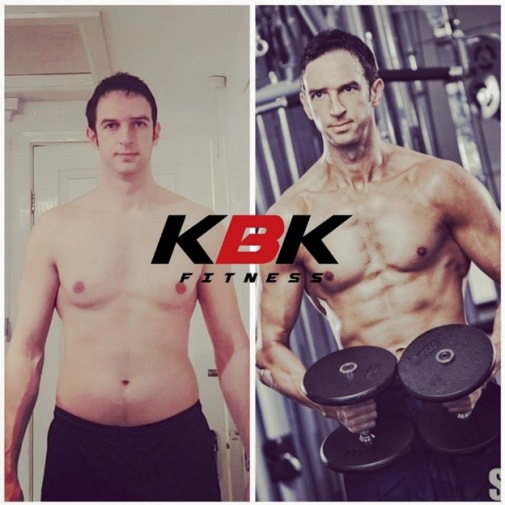
Kris Kane is a North Yorkshire based personal trainer, martial arts instructor and general fitness enthusiast. You can find him on Instagram at @koachedbykris and also view him professionally on LinkedIn at www.linkedin.com/in/kris-kane.
Going to a gym can seem like a scary experience!
Many people like the idea but keep putting it off for fear of being judged or not knowing what to do.
Here’s some tips to overcome the barriers that might be stopping you:
- Find a gym that you enjoy, it should be an enjoyable experience not one you dread.
- Grab a training partner, you can both encourage and support each other.
- Follow a set plan, have a plan in place so you know what you’ll be doing every session and can become familiar with.
- Don’t pay attention to anyone making you feel uncomfortable, they’re just an idiot!
- Accept your starting point, even the biggest guy in the gym was once a beginner.
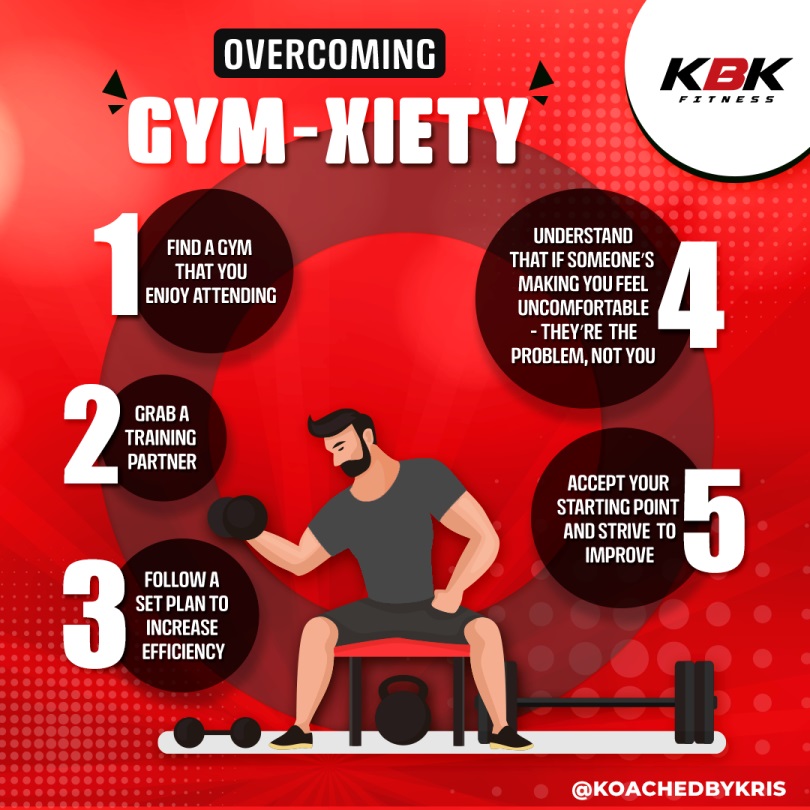
The biggest challenge is getting through the front door, but once you’ve been a few times it will all become more familiar, you’ll feel more comfortable, and enjoy it as you start making some great progress.
Give it a go!
Striding along (Judith Shipps)

Judith Shipps is a System Administrator who works for a company in the U.S. electric power industry. She has cerebral palsy.
Autumn is a great time of year for walking. There are cool breezes to keep you from getting overheated, and lots of interesting things to look at to keep you moving. I grabbed my pedometer a few weeks ago and verified my personal settings. Imagine my surprise – Shock really – that I had lost 3 inches in my stride over the last two years!
The length of a person’s stride is measured from heel to heel. An average man’s walking stride is 30 inches, and an average woman’s stride is 26.4 inches (Hauptman, 2018). If your pedometer does not have any configuration settings available, then it probably uses some variation of these. In Physical Therapy, I have always been measured 3 ways – standing still in a comfortable stride position; walking; and running. How you ask? Step in some baby powder, and measure the results. You might be surprised. As a child we all loved measurement day, and would track powder all through the facility. You can do the same measurements out of doors with a little bit of mud or chalk and a measuring tape.
Most people do develop a shorter stride as they age. Assistive devices can also affect gait and stride length. A shorter stride can be great for runners. Shorter strides mean that the shock is absorbed with the whole foot, rather than just the heel or ball of the foot. I often hear joggers talk about long strides being more efficient because more distance is covered with each step. But this can lead to more bouncing in overall movement, and more overall shock to the joints. An improperly balanced long stride commonly leads to shin splints, or back trouble
In my case, 3 inches was too much difference in my stride over time. I will be incorporating some additional adductor, flexor, and hamstring exercises into my routine in coming months.
After reading this publication for almost a year before becoming a columnist, I will take the advice of my colleagues here – add new exercises slowly; don’t overdo; and try not to get discouraged.
References:
Thompson, D. (2002, April 24). Stride Analysis. Stride analysis. Retrieved October 1, 2021, from https://ouhsc.edu/bserdac/dthompso/web/gait/knmatics/stride.htm
Hauptman, N. (2018, April 11). The Average Walking Stride Length. Live Healthy Fitness. Retrieved October 1, 2021, from https://livehealthy.chron.com/average-walking-stride-length-7494.html
IT pro toolbox
dtSearch®-Instantly Search Terabytes. Doc. filters for popular file types, emails, databases & web data; 25+ search options; Win/Lin/Mac C++/Java/.NET Core APIs; Azure/AWS FAQs. Enterprise/dev evals available.
Are you drowning in a flood of emails? Try email archiving from MailStore: increase your productivity, reduce IT costs, and don’t lose another important email again:
Explorer++ is a lightweight and fast file manager for Windows:
https://github.com/derceg/explorerplusplus
Windows Kernel Explorer is a free but powerful Windows kernel research tool:
https://github.com/AxtMueller/Windows-Kernel-Explorer
Notepads is a modern, lightweight text editor with minimum design:
https://github.com/JasonStein/Notepads
Send us your feedback!
Got feedback about anything in this issue of FitITproNews? Email us today!
Product of the Week